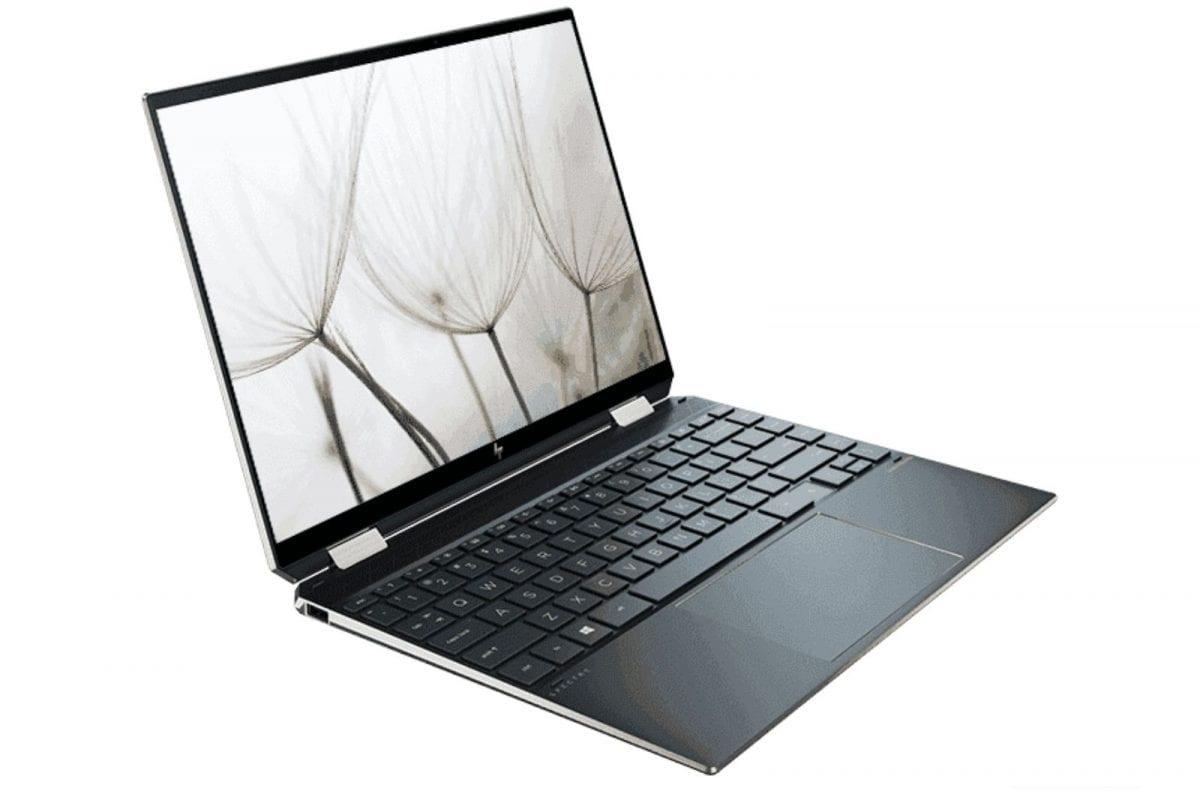The more things change, the more they remain the same. Sitting firmly entrenched in that category is the HP Spectre laptop series. It is plainly a superhuman effort that every year, HP India absolutely nails the premium build which not many Windows laptops can, retains the larger design cues and yet improves them and almost always complicates life for the Dell XPS series which has dialed up the price tag as well. The HP Spectre x360 14 2021 edition has the versatility of a Windows convertible and gets some serious updates including an OLED display as well as the latest generation Intel Evo chips. You will pay top money too for this, with a price tag of Rs 1,19,999 for the Core i7 powered option. This succeeds the HP Spectre x360 13 with a slightly larger and square-er display, without actually growing up in size.
Yet again, and this is something we have pointed out earlier as well—HP is undercutting direct rivals on the price tag, by a significant margin. The Lenovo ThinkPad X1 Titanium prices start at Rs 1,99,136 for the 11th generation Intel Core i5 version with a similar 13.5-inch display size in IPS. That being said, there is the Asus ZenBook Flip S13 which is priced around Rs 1,82,990 that does offer closer competition—this runs the same Intel Core i7 processor and has similar specs, except the display is a tad smaller at 13.3-inches but goes up to the full 4K resolution. It isn’t going to be easy to choose. This price tag of the 2021 edition of the HP Spectre x360 14 actually also draw the higher spec variants of the Dell Latitude 14 convertible range, into the line of fire.
It is hard for laptops in the Windows ecosystem to match the HP Spectre x360 14, visually. The gem cut edges and the corners that have the sharp chopped off look decidedly up the premium-ness quotient. What you see here is the Poseidon Blue colorway, but the thing with this is, it looks much darker most of the time and you’d be able to notice the hues of blue at certain angles as light bounces off it. Matte finish on the lid and the keyboard deck, with the brass accents on the side spines and around the back, adding some sparkle to the otherwise very understated look. You can even spot these around the touchpad. The HP Spectre x360 14 tips the scales around 1.3kg but what you’ll appreciate every time you pick this and move around is the fairly compact footprint and the dimensions that are kept well in check, something that does justice to a premium laptop.
The display must be the biggest upgrade, generation over generation. The wider aspect ratio has made way for a 3:2 ratio, which is something that gives you a squarer screen to work with compared with 16:10 or 16:9 that’s most common in laptops these days. If you’re used to the widescreen ratio, you might fear this is disruptive. It isn’t and is easy to get used to. think of it as a little more vertical space and a little less horizontal space. Might be a problem though if you habitually use apps side by side, but the chances of doing on an around 13-inch display aren’t very high. The aspect ratio change might have been more abrupt on a larger display more adept at multi-tasking needs.
And it isn’t just the change in dimensions. This is an OLED display and whichever way you look at this development, this is one serious upgrade. The resolution is 3000 x 2000 and it is a touch display as well. HP claims this is brighter than before, and it visibly is brighter than the IPS displays that it succeeds from the previous HP Spectre x360 13 laptops. This was and continues to be very flexible for indoor use and even outdoors, if you want to quickly type out a document while enjoying a bit of the afternoon sun in the winters—that is just a happy example in these bleak times. Colours, as an OLED display would dictate, are definitely richer than anything an IPS screen would be able to replicate. There is that subtle richness about how colours look on this screen, alongside the inky blacks, which makes this great for work and media viewing. And then there is the secret trick called HP Display which lets you tweak settings around depending on what you are watching on the screen at the time—there are preset calibrations that you can toggle between. It is good that you see more of the screen, with some serious thinning of the bezels around the screen more than welcome. Just like the HP ENVY laptop that came just before this, the HP Spectre x360 14’s screen is also calibrated out of the box. This is a good change that HP is making with the new premium laptops, something that’ll be very useful for a variety of tasks such as photo and video editing.
The HP Spectre x360 14 spec that we are reviewing is powered by the Intel Core i7-1165G7 chip, 16GB RAM, a 1TB SSD and the Intel Xe graphics. This specific Core i7 variant is part of the Intel Evo platform, and there are advantages of making that upgrade—better battery life, faster boot times, fast charging, Wi-Fi 6 and better management of heat vis à vis performance. For an ultra slim laptop, you’d always have the apprehension of heating forcing the eventual performance ceiling to kick in much sooner. Yet, the HP Spectre x360 14 doesn’t exhibit any such limitations, with heating kept well in check and the consistent performance not getting impacted by the thermal reading changes. As a workday machine, with Microsoft Edge tabs getting stacked and one losing count after a point and multiple documents opened at the same time, I managed to eke out just upwards of 10 hours of battery life from the HP Spectre x360 14, with the display brightness set around 20%. Yes, the OLED does drain a bit more than an IPS screen would, but you really aren’t sacrificing much in terms of battery life for a superior display tech.
Installed on the HP Spectre x360 14 is a utility called HP Command Center. Here, you will find a bunch of settings options, including Network Booster for apps. Here, in System Control, there is the Device Mode setting that lets you choose how you want to dynamically balance the performance, cooling and fan noise based on a bunch of factors including laptop placement and the battery charge level at the time. You have the option of leaving this at manual, but choose Smart Sense, and the HP laptop can even detect instances of you keeping it inside a bag or a sleeve while it may not be powered down or in a low power state and tweaks the setting to critically reduce overheating in this un-ventilated state.
The keyboard and trackpad combination are just about right for writers, in particular. Is it just me or does the key size feel a tad chunkier than before? Start typing on this and you’d get used to it soon enough. Each key press generates a reassuring thud as your fingers glide over the alphabets and numbers. For me, the challenge from switching over from a MacBook was the perceived left alignment of the keys—the HP Spectre x360 14 has the extra vertical row on the right side (page up, page down, end etc. keys), which took some getting used to. The touchpad is larger than any Spectre 13 before this which is good for swipe gestures. Yet, there were times when slide to copy wasn’t exactly accurate—that’s something you’d expect from budget laptops but not something as premium as this.
The Last Word: Almost Perfect, And You’d Love The HP Spectre x360 14’s OLED Upgrade
There are definite upgrades that make the 2021 iteration of the HP Spectre x360 14 a step up from the HP Spectre x360 13 that it succeeds. The foundations remain as solid as before, including that gorgeous and very familiar design. The OLED display with the higher resolution and the new aspect ratio makes a world of difference, and so does the Intel Evo platform in delivering the sort of performance you’d want from a laptop powered by a Core i7 processor. Simply put. Yet, there are those smaller details that remain untouched, which is perhaps a bit of a dampener. HP’s installation of Windows 10 on the HP Spectre x360 14 includes a bunch of bloatware—LastPass, ExpressVPN trial, Dropbox trial and so on. While this may be given a pass on most other laptops, the higher the price, the more attentive a buyer is to such foibles. A cleanup may be required. Perhaps with the Windows 11 update that comes later this year?




